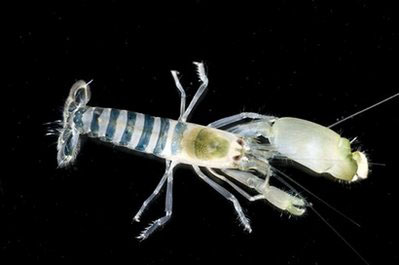 |
|
In this 2008 photo provided by the Queensland Museum is a green banded snapping shrimp, Alpheus parvirostris, taken from dead coral head off Heron Island, Australia. [Agencies]
|
"So you end up seeing some very old things down there. You can see corals which probably existed 2,000 years ago down there."
Scientists said that only a tiny proportion of Australia's oceans had been explored in such a way and they could only speculate on the biodiversity hidden under the water.
"We have no idea how many species there are, and most of the species we get we only catch once," Bax said.
Environment Minister Peter Garrett described the results as "an amazing day for Australian science".
"It's extraordinary to think that we've put someone on the moon and we're very familiar with lots of parts of the planet, we've got Google Earth and yet here we are, we've got parts of the planet that have never been sighted or explored before," he told national radio.
The minister said the research would help the effort to conserve Australia's ocean biodiversity.
"It'll greatly inform scientists as they deepen their understanding about likely climate change impacts, water currents, and impacts of water temperature on the diversity of species," Garrett said.

